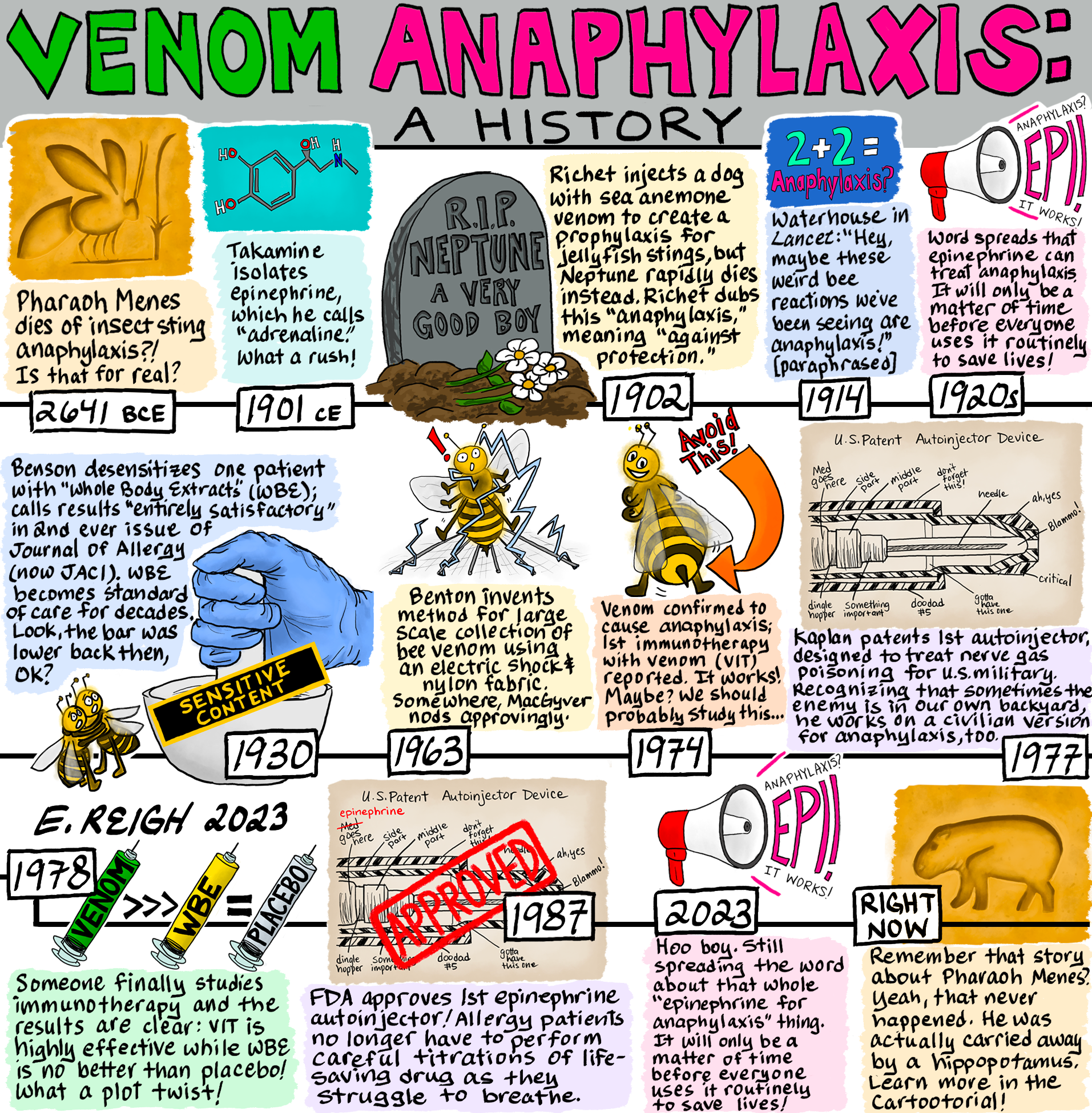JUST THE BASICS
This cartoon talks about the fascinating history of insect sting anaphylaxis and the use of epinephrine to treat it. Anaphylaxis is a sudden, life-threatening allergic reaction that can include symptoms such as rash, swelling, and trouble breathing. The venom of insect stings from bees, wasps, hornets, and yellow jackets is one potential cause of anaphylaxis. The most effective way to treat anaphylaxis is with epinephrine injections (also known as adrenaline). Before the epinephrine autoinjector was invented, patients had to use a syringe to draw up the correct dose of epinephrine from a vial. As you can imagine, this is a lot harder to do in the middle of an allergic reaction.
TELL ME SOMETHING NERDY
In the 1930s, the first immunotherapy for insect sting allergy was reported - desensitization using “whole body extract” (WBE). This therapy was created by crushing the bodies of stinging insects and injecting tiny amounts into allergy patients with the goal of retraining their immune system to stop being allergic. However, in the 1970s, it was confirmed that insect venom, not protein from the body of the insect, was the trigger for allergic reactions. When immunotherapy using venom alone (VIT) was compared head-to-head with WBE, they found that VIT was highly effective and WBE was no better than placebo! We now use VIT to desensitize patients for insect sting allergy. This is a life-saving therapy for people with severe insect sting allergies and can prevent anaphylaxis if they are stung again.
Published in August 2023 Annals of Allergy, Asthma & Immunology: https://doi.org/10.1016/j.anai.2023.03.011
